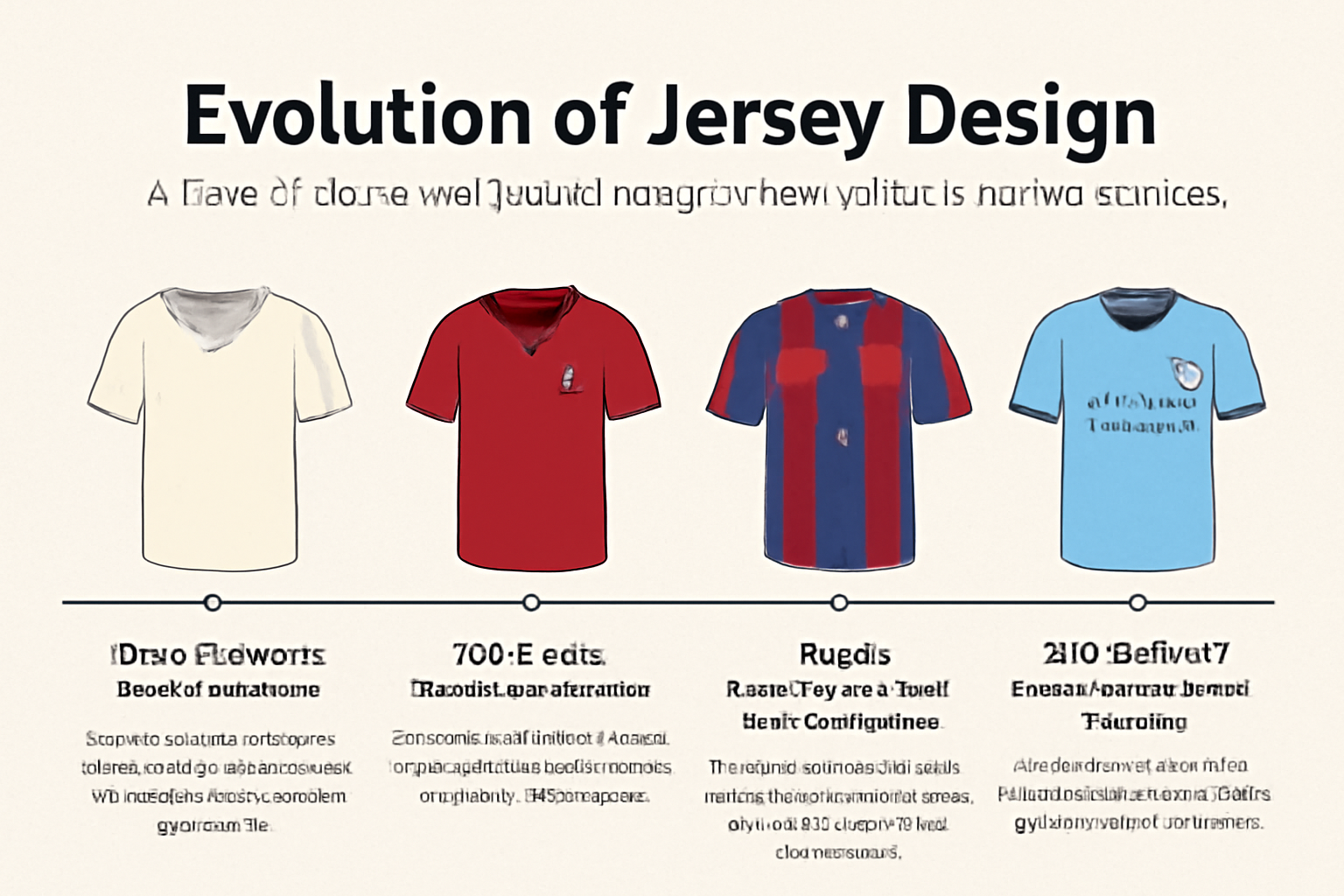
The Evolution of Jersey Design
1. Early Designs: Simplicity and Functionality
The early football jerseys were very simple, primarily made of natural fibers like cotton. The design was basic and focused on functionality, aiming to identify players and provide minimal protection during the game.
For example: The England and Scotland teams’ jerseys in the early 20th century had simple designs, with little to no decoration, mostly based on team colors.
2. 1960s-1980s: Introduction of Badges and Brands
As football became more global, clubs started adding their team badges and sponsor logos to jerseys. Jerseys evolved from being just a functional piece of clothing to becoming a symbol of team identity and culture.
For example: Adidas collaborated with top clubs, bringing its iconic three-stripe design into jerseys, which became a symbol of the era.
3. 1990s: Personalized Designs and Technological Innovations
The 1990s saw a more creative approach to jersey design, with clubs adopting more vibrant logos, patterns, and colors. This period also witnessed a revolution in fabrics, with synthetic materials replacing cotton to make jerseys lighter and more sweat-resistant.
For example: Manchester United and Barcelona’s jerseys from the 1990s are representative of the era. Barcelona’s iconic red and blue design, paired with intricate patterns, became a classic.
4. 2000s to Present: Modern Designs and Technology Integration
As technology advanced, jersey design entered a new era. Comfort and performance became the focal points, with jerseys made from high-tech materials like breathable, anti-bacterial, and UV-resistant fabrics.
In recent years, more emphasis has been placed on fine details in the design, making the jerseys not just functional but also a fashion statement.
For example: Nike and Adidas have introduced designs that ensure jerseys fit like a second skin, enhancing both player performance and fan appeal.
5. Future Trends: Sustainability and Customization
With growing environmental concerns, jersey design is shifting towards sustainability, with clubs beginning to use recycled materials to produce jerseys.
Additionally, customization has become a huge trend, allowing fans to personalize their jerseys with names, numbers, and even color choices.
Conclusion
From simple, utilitarian designs to the sophisticated and highly technical jerseys we see today, the evolution of football jerseys reflects the growth of football culture. Jerseys are no longer just player apparel; they are symbols of team spirit, brand power, and fan loyalty.